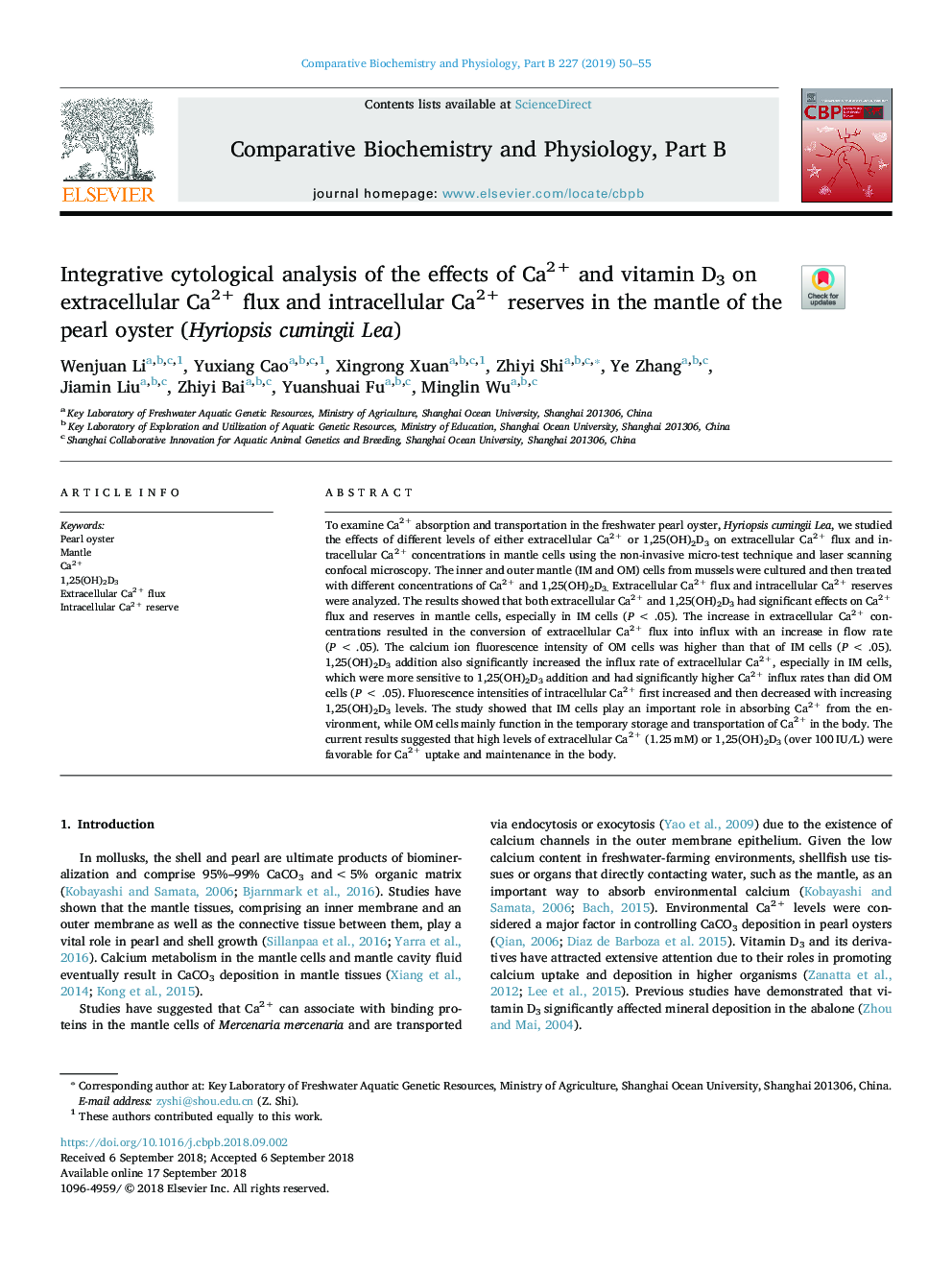| Article ID | Journal | Published Year | Pages | File Type |
|---|---|---|---|---|
| 11026073 | Comparative Biochemistry and Physiology Part B: Biochemistry and Molecular Biology | 2019 | 6 Pages |
Abstract
To examine Ca2+ absorption and transportation in the freshwater pearl oyster, Hyriopsis cumingii Lea, we studied the effects of different levels of either extracellular Ca2+ or 1,25(OH)2D3 on extracellular Ca2+ flux and intracellular Ca2+ concentrations in mantle cells using the non-invasive micro-test technique and laser scanning confocal microscopy. The inner and outer mantle (IM and OM) cells from mussels were cultured and then treated with different concentrations of Ca2+ and 1,25(OH)2D3. Extracellular Ca2+ flux and intracellular Ca2+ reserves were analyzed. The results showed that both extracellular Ca2+ and 1,25(OH)2D3 had significant effects on Ca2+ flux and reserves in mantle cells, especially in IM cells (Pâ¯<â¯.05). The increase in extracellular Ca2+ concentrations resulted in the conversion of extracellular Ca2+ flux into influx with an increase in flow rate (Pâ¯<â¯.05). The calcium ion fluorescence intensity of OM cells was higher than that of IM cells (Pâ¯<â¯.05). 1,25(OH)2D3 addition also significantly increased the influx rate of extracellular Ca2+, especially in IM cells, which were more sensitive to 1,25(OH)2D3 addition and had significantly higher Ca2+ influx rates than did OM cells (Pâ¯<â¯.05). Fluorescence intensities of intracellular Ca2+ first increased and then decreased with increasing 1,25(OH)2D3 levels. The study showed that IM cells play an important role in absorbing Ca2+ from the environment, while OM cells mainly function in the temporary storage and transportation of Ca2+ in the body. The current results suggested that high levels of extracellular Ca2+ (1.25â¯mM) or 1,25(OH)2D3 (over 100â¯IU/L) were favorable for Ca2+ uptake and maintenance in the body.
Keywords
Related Topics
Life Sciences
Biochemistry, Genetics and Molecular Biology
Biochemistry
Authors
Wenjuan Li, Yuxiang Cao, Xingrong Xuan, Zhiyi Shi, Ye Zhang, Jiamin Liu, Zhiyi Bai, Yuanshuai Fu, Minglin Wu,
